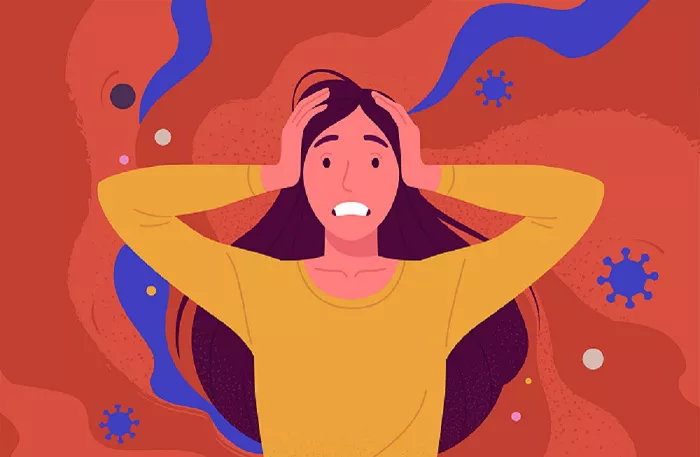Anxiety and panic attacks can feel overwhelming and terrifying, often leaving individuals struggling to regain control over their emotions and daily lives. They can happen suddenly, with no warning, and can have a significant impact on a person’s mental, emotional, and physical well-being. This article aims to provide understanding, practical coping strategies, and professional insights to help manage these challenges effectively. With the right tools and support, individuals can reduce the frequency and intensity of anxiety and panic attacks, leading to a more peaceful and balanced life.
What Are Anxiety and Panic Attacks?
Anxiety is a natural emotional response to stress, but when it becomes excessive and chronic, it can interfere with daily activities. Panic attacks, on the other hand, are sudden episodes of intense fear that occur without warning, often causing physical symptoms such as a racing heart, shortness of breath, and dizziness. Understanding the difference between these two conditions is crucial for finding the appropriate treatment and coping mechanisms.
Symptoms of Anxiety and Panic Attacks
The symptoms of anxiety can vary from person to person, but common signs include:
- Constant worry or fear
- Difficulty concentrating
- Restlessness or feeling on edge
- Physical symptoms such as muscle tension or headaches
Panic attacks are typically characterized by a sudden rush of fear, accompanied by:
- Rapid heart rate or palpitations
- Difficulty breathing or shortness of breath
- Chest pain or discomfort
- Dizziness or lightheadedness
- Sweating, chills, or hot flashes
Common Triggers of Anxiety and Panic Attacks
Various factors can trigger anxiety or panic attacks, including:
- Stressful life events (e.g., job loss, relationship issues)
- Health problems or chronic illnesses
- Genetic predisposition or family history of mental health conditions
- Substance abuse or withdrawal
- Phobias or fears of specific situations (e.g., flying, social interactions)
How to Manage Anxiety and Panic Attacks
Managing anxiety and panic attacks involves a combination of self-help strategies and professional treatment. Below are some effective techniques to reduce the frequency and severity of these attacks:
1. Practice Deep Breathing Exercises
Deep breathing helps activate the body’s relaxation response, counteracting the effects of anxiety. One effective method is the 4-7-8 technique, where you inhale for 4 seconds, hold your breath for 7 seconds, and then exhale slowly for 8 seconds. This practice can calm the mind and reduce physical symptoms of anxiety.
2. Use Mindfulness and Meditation
Mindfulness involves staying present in the moment and acknowledging thoughts and feelings without judgment. Meditation practices such as guided imagery, body scanning, or focusing on your breath can help ground your thoughts and reduce anxiety levels.
3. Cognitive Behavioral Therapy (CBT)
Cognitive Behavioral Therapy is a highly effective therapy for treating anxiety and panic attacks. CBT helps individuals identify negative thought patterns and replace them with healthier, more realistic thoughts. It also encourages the development of problem-solving skills and coping mechanisms.
4. Exposure Therapy
Exposure therapy involves gradually confronting the situations or objects that trigger anxiety or panic attacks in a safe, controlled manner. Over time, this can help reduce the emotional response to these triggers.
5. Lifestyle Changes for Managing Anxiety
Incorporating healthy habits into your daily routine can have a significant impact on anxiety management. This includes:
- Regular physical exercise, such as yoga, walking, or swimming
- Getting adequate sleep each night
- Eating a balanced diet rich in nutrients
- Avoiding caffeine, alcohol, and nicotine
When to Seek Professional Help
If anxiety or panic attacks are interfering with daily life and self-help strategies are not enough, it may be time to seek professional help. A mental health professional can assess the severity of the condition and recommend appropriate treatments, such as:
- Therapy (e.g., CBT, exposure therapy)
- Medication (e.g., antidepressants, benzodiazepines, SSRIs)
- Support groups for anxiety and panic disorders
Helpful Tools and Tests for Understanding Your Anxiety
There are several tests and self-assessments available that can help individuals understand their anxiety levels. A few examples include:
- The Generalized Anxiety Disorder 7 (GAD-7) Scale
- The Panic Disorder Severity Scale (PDSS)
- The Beck Anxiety Inventory (BAI)
These tests can give individuals an idea of the severity of their symptoms and help guide their treatment plan. However, they should not replace professional diagnosis or treatment.
Building a Support System
Having a strong support system can make a world of difference in managing anxiety and panic attacks. This may include:
- Talking openly with friends and family about your experiences
- Joining a support group for individuals with anxiety disorders
- Working with a mental health professional who specializes in anxiety disorders
Conclusion: Taking the First Step Toward Recovery
Dealing with anxiety and panic attacks can be challenging, but with the right tools and support, individuals can manage these conditions and lead a fulfilling life. By practicing coping strategies, seeking professional help, and building a solid support network, it is possible to reduce the impact of anxiety on daily life. Remember, recovery is a journey, and it’s okay to take small steps toward feeling better.
Related topics:
- What Helps with Anxiety and Panic Attacks?
- Is It Normal to Have Panic Attacks Every Day?
- 7 Signs Of Agoraphobia And Panic Attacks


